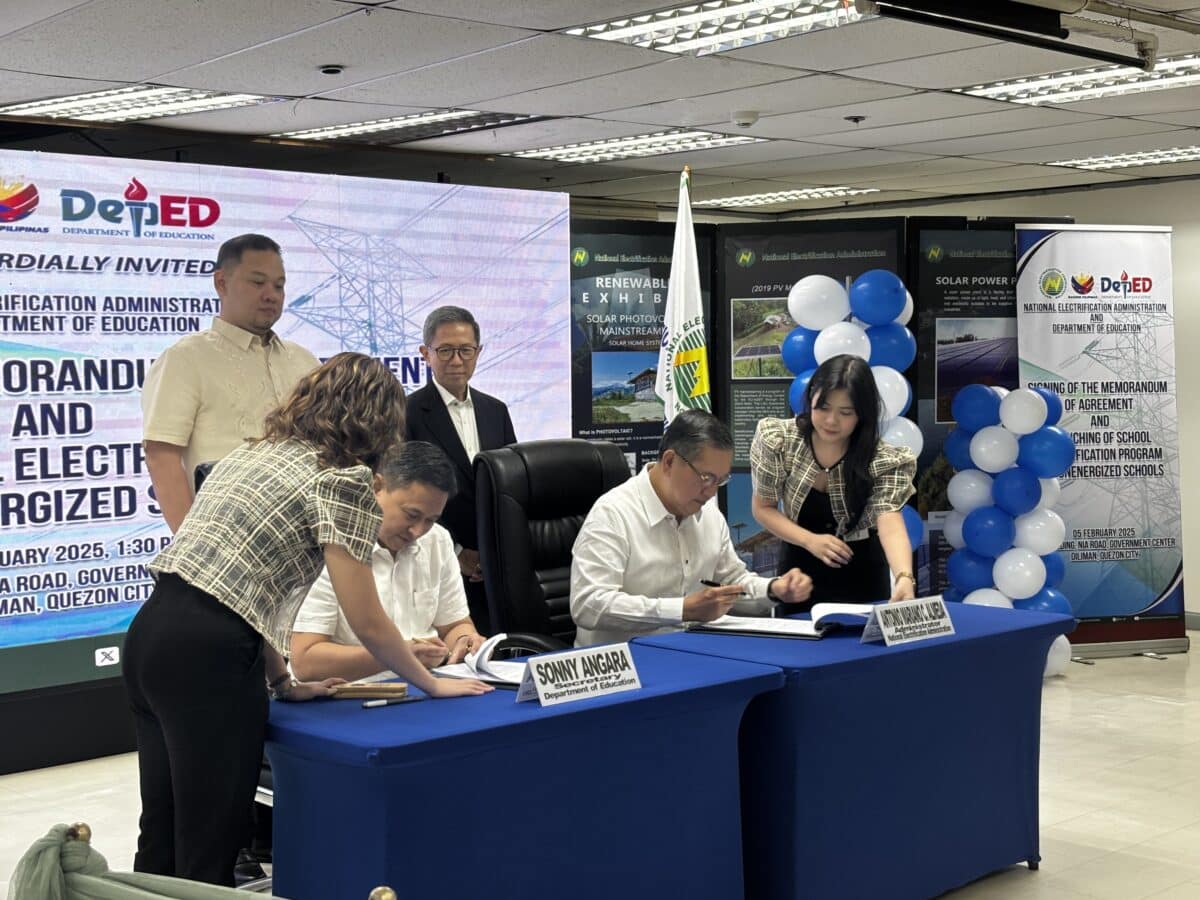NEA, DOE to install solar power at far-flung schools

National Electrification Administration (NEA) administrator Antonio Mariano Almeda and Education Secretary Juan Edgardo Angara signed a memorandum of agreement on Wednesday to provide electricity to last mile schools in the Philippines. (Photo by Jordeene B. Lagare)
MANILA, Philippines — The National Electrification Administration (NEA) and the Department of Energy (DOE) have partnered to provide electricity to last mile schools in the Philippines, covering about 1.6 million students nationwide.
The memorandum of agreement (MOA) signed by both government agencies on Wednesday involves the installation of solar photovoltaic (PV) systems in remote areas where there is no reliable access to electricity.
The DepEd is responsible for identifying and prioritizing schools in need of access to electricity. They will facilitate the necessary permits from concerned local government units as well as extend counterpart logistical and financial support to implement the project.
For its part, the NEA will provide technical assistance in setting up the solar PV panels, monitor the system and conduct further evaluations to ensure the project’s completion.
READ: Electricity in 1.6M households restored — NEA
NEA Administrator Antonio Mariano Almeda said the cost of setting up the solar PV panels and batteries is pegged at P1.6 million covering two classrooms.
The funding will come from various sources, including national or local government allocations, private institution grants and partnerships or other approved financial mechanisms, according to the NEA.
“Hopefully, by the first quarter of this year, we will be able to tender biddings already. And we have to understand, we still use carabaos to pull the materials and bring them to the mountain,” he added.
Education Secretary Juan Edgardo Angara expressed hope the undertaking will be completed this year.
“Hopefully this year, we will finish it (the energization project). But of course, sometimes the terrain is very challenging,” Angara said.
“But then as you know, it’s the last mile schools that are difficult to reach. Just like the challenge of the electric cooperatives at NEA, it’s the last mile areas that are not only difficult but expensive to energize,” Energy Secretary Raphael Lotilla said.
Lotilla said 1.6 million students are expected to benefit from this initiative.
Approximately 1,500 public schools in the country still do not have electricity, according to Lotilla, citing a report from the Second Congressional Commission on Education.
Out of approximately 1,500 public schools without access to electricity, one-third are situated in the Bangsamoro Autonomous Region in Muslim Mindanao and provinces such as North Cotabato, Palawan, Sulu, Zamboanga del Sur and Negros Oriental.
The University of the Philippines College of Engineering has been commissioned to develop the prototype for the planned solar PV systems in far-off schools.
